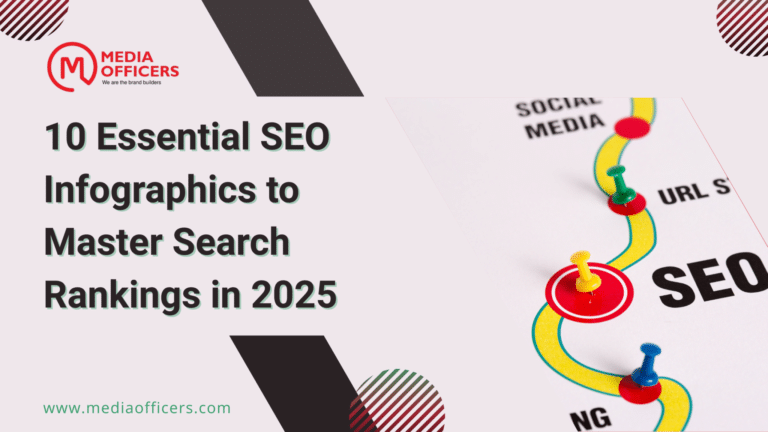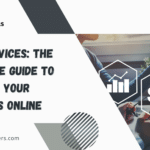Internal linking for SEO Success is the practice of connecting pages within a single website through hyperlinks. This technique serves multiple purposes, including improving website navigation, establishing content hierarchies, and enhancing search engine optimization (SEO). By strategically placing internal links, website owners can guide users to relevant information and help search engines better understand the structure and content of their site.
Internal links can take various forms, such as text links, image links, or navigation menus. These connections between related content not only benefit users but also assist search engine crawlers in discovering and indexing new pages. While often overlooked, internal linking is a crucial component of on-page SEO that can significantly impact a website’s performance in search engine results.
The importance of internal linking extends to website architecture and search engine crawling processes. A well-structured network of internal links can direct search engine crawlers to key pages, potentially improving the site’s overall visibility and rankings. Additionally, internal linking enhances user experience by facilitating easier navigation and content discovery.
When implemented effectively, this technique can establish clear information hierarchies and distribute link equity throughout the site, ultimately contributing to improved SEO performance.
Key Takeaways
- Internal linking is the practice of linking one page of a website to another page within the same website.
- Internal linking impacts SEO by helping search engines understand the structure and hierarchy of a website, and by distributing page authority and ranking power throughout the site.
- The benefits of internal linking for SEO include improved website navigation, increased page authority, and enhanced user experience.
- Best practices for internal linking include using descriptive anchor text, linking to relevant pages, and creating a logical linking structure.
- Internal linking tools and resources such as plugins, site crawlers, and SEO tools can help website owners optimize their internal linking strategy.
How Internal Linking Impacts SEO
Improved Indexing and Ranking
Internal linking also helps distribute link equity throughout the website. When one page links to another page within the same website, it passes on some of its authority and value to the linked page. This can help improve the ranking of the linked page in search engine results.
Enhanced User Experience
Additionally, internal linking can help keep visitors on the website for longer periods by guiding them to related content, which can improve user engagement and reduce bounce rates. Furthermore, internal linking can help establish keyword relevance within a website. By strategically using anchor text in internal links, webmasters can signal to search engines the relevance of a particular page for specific keywords.
Keyword Relevance and Link Equity
This can help improve the ranking of the linked page for those keywords in search engine results. Internal linking has a profound impact on search engine optimization (SEO) as it helps search engines understand the structure and hierarchy of a website. When search engine crawlers follow internal links, they are able to discover new pages and understand how different pages are related to each other.
The Benefits of Internal Linking for SEO

There are several benefits of internal linking for SEO. Firstly, internal linking helps spread link equity throughout a website, which can improve the ranking of individual pages in search engine results. When one page links to another page within the same website, it passes on some of its authority and value to the linked page.
This can help improve the visibility and ranking of the linked page in search engine results. Secondly, internal linking helps establish keyword relevance within a website. By using relevant anchor text in internal links, webmasters can signal to search engines the relevance of a particular page for specific keywords.
This can help improve the ranking of the linked page for those keywords in search engine results. Thirdly, internal linking helps improve user experience by guiding visitors to related content within the website. When users are able to easily navigate through a website and find relevant information, they are more likely to stay on the website for longer periods, which can reduce bounce rates and improve user engagement.
Lastly, internal linking helps search engine crawlers discover and index new pages on a website more effectively. By creating a network of internal links, webmasters can guide search engine crawlers to important pages on their website, which can ultimately improve the overall visibility and ranking of the website. There are numerous benefits of internal linking for SEO.
Firstly, internal linking helps spread link equity throughout a website, which can improve the ranking of individual pages in search engine results. When one page links to another page within the same website, it passes on some of its authority and value to the linked page. This can help improve the visibility and ranking of the linked page in search engine results.
Secondly, internal linking helps establish keyword relevance within a website. By using relevant anchor text in internal links, webmasters can signal to search engines the relevance of a particular page for specific keywords. This can help improve the ranking of the linked page for those keywords in search engine results.
Thirdly, internal linking helps improve user experience by guiding visitors to related content within the website. When users are able to easily navigate through a website and find relevant information, they are more likely to stay on the website for longer periods, which can reduce bounce rates and improve user engagement. Lastly, internal linking helps search engine crawlers discover and index new pages on a website more effectively.
By creating a network of internal links, webmasters can guide search engine crawlers to important pages on their website, which can ultimately improve the overall visibility and ranking of the website.
Best Practices for Internal Linking
When it comes to internal linking for SEO, there are several best practices that webmasters should follow to maximize its effectiveness. Firstly, it’s important to use descriptive anchor text when creating internal links. The anchor text should accurately describe the content of the linked page and should include relevant keywords when appropriate.
Secondly, webmasters should prioritize linking to important pages within their website. By strategically placing internal links to important pages, webmasters can pass on link equity and value to those pages, which can help improve their ranking in search engine results. Thirdly, it’s important to avoid over-optimizing anchor text with keyword-rich phrases.
Instead, webmasters should focus on using natural language and relevant phrases that accurately describe the linked content. Furthermore, webmasters should regularly audit their internal links to ensure that they are still relevant and functional. Broken or irrelevant internal links can negatively impact user experience and SEO performance.
Lastly, it’s important to create a logical hierarchy of internal links within a website. By organizing internal links in a logical manner, webmasters can help both users and search engines navigate through the website more effectively. When it comes to internal linking for SEO, there are several best practices that webmasters should follow to maximize its effectiveness.
Firstly, it’s important to use descriptive anchor text when creating internal links. The anchor text should accurately describe the content of the linked page and should include relevant keywords when appropriate. Secondly, webmasters should prioritize linking to important pages within their website.
By strategically placing internal links to important pages, webmasters can pass on link equity and value to those pages, which can help improve their ranking in search engine results. Thirdly, it’s important to avoid over-optimizing anchor text with keyword-rich phrases. Instead, webmasters should focus on using natural language and relevant phrases that accurately describe the linked content.
Furthermore, webmasters should regularly audit their internal links to ensure that they are still relevant and functional. Broken or irrelevant internal links can negatively impact user experience and SEO performance. Lastly, it’s important to create a logical hierarchy of internal links within a website.
By organizing internal links in a logical manner, webmasters can help both users and search engines navigate through the website more effectively.
Internal Linking Tools and Resources
There are several tools and resources available to help webmasters with their internal linking efforts. Firstly, there are various plugins and software available that can help automate internal linking within a website. These tools can analyze existing content and suggest relevant internal links based on keywords and content relevance.
Secondly, there are several online resources and guides available that provide best practices and tips for effective internal linking strategies. These resources often include case studies and examples that demonstrate successful internal linking techniques. Furthermore, there are SEO tools available that can help webmasters analyze their internal linking structure and identify opportunities for improvement.
These tools often provide insights into link equity distribution and anchor text optimization. Lastly, webmasters can also leverage web analytics tools to track user behavior and engagement with internal links. By analyzing user interaction with internal links, webmasters can gain valuable insights into how users navigate through their website and identify areas for improvement.
There are several tools and resources available to help webmasters with their internal linking efforts. Firstly, there are various plugins and software available that can help automate internal linking within a website. These tools can analyze existing content and suggest relevant internal links based on keywords and content relevance.
Secondly, there are several online resources and guides available that provide best practices and tips for effective internal linking strategies. These resources often include case studies and examples that demonstrate successful internal linking techniques. Furthermore, there are SEO tools available that can help webmasters analyze their internal linking structure and identify opportunities for improvement.
These tools often provide insights into link equity distribution and anchor text optimization. Lastly, webmasters can also leverage web analytics tools to track user behavior and engagement with internal links. By analyzing user interaction with internal links, webmasters can gain valuable insights into how users navigate through their website and identify areas for improvement.
Common Mistakes to Avoid with Internal Linking

Avoid Over-Optimizing Anchor Text
One of the most common mistakes is over-optimizing anchor text with keyword-rich phrases. This can be detrimental to SEO performance. Instead of focusing on keyword stuffing in anchor text, webmasters should prioritize using natural language that accurately describes the linked content.
Ensure Relevant and Functional Internal Links
Using irrelevant or broken internal links can negatively impact user experience and SEO performance. It’s essential for webmasters to regularly audit their internal links to ensure that they are still relevant and functional. Furthermore, neglecting to prioritize important pages within a website when creating internal links can result in missed opportunities for improving their visibility and ranking in search engine results.
Organize Internal Links Logically
Creating an illogical hierarchy of internal links within a website can confuse both users and search engines when navigating through the site. It’s crucial for webmasters to organize their internal links in a logical manner that makes it easy for users and search engines to find relevant content. By avoiding these common mistakes, webmasters can create an effective internal linking strategy that improves their website’s SEO performance.
The Future of Internal Linking for SEO
The future of internal linking for SEO is likely to continue evolving as search engines become more sophisticated in understanding website structure and content relevance. As artificial intelligence (AI) continues to advance, search engines will likely become better at understanding natural language and context within content, which will impact how they interpret anchor text in internal links. Furthermore, as voice search becomes more prevalent, there may be an increased emphasis on natural language processing (NLP) within search algorithms.
This could impact how webmasters optimize anchor text in their internal links as they may need to consider how people naturally speak when searching for information. Additionally, as user experience becomes increasingly important for SEO, there may be more focus on how users interact with internal links within a website. Search engines may start considering user behavior metrics such as click-through rates on internal links as a ranking factor.
Overall, the future of internal linking for SEO is likely to be influenced by advancements in AI, voice search technology, and an increased emphasis on user experience metrics within search algorithms. The future of internal linking for SEO is likely to continue evolving as search engines become more sophisticated in understanding website structure and content relevance. As artificial intelligence (AI) continues to advance, search engines will likely become better at understanding natural language and context within content, which will impact how they interpret anchor text in internal links.
Furthermore, as voice search becomes more prevalent, there may be an increased emphasis on natural language processing (NLP) within search algorithms. This could impact how webmasters optimize anchor text in their internal links as they may need to consider how people naturally speak when searching for information. Additionally, as user experience becomes increasingly important for SEO, there may be more focus on how users interact with internal links within a website.
Search engines may start considering user behavior metrics such as click-through rates on internal links as a ranking factor. Overall, the future of internal linking for SEO is likely to be influenced by advancements in AI, voice search technology, and an increased emphasis on user experience metrics within search algorithms.
If you’re looking to boost your online presence and improve your SEO, you may want to consider working with the best SEO company in Chandigarh. This comprehensive guide from Media Officers provides valuable insights into finding the right company to help you achieve your digital marketing goals. With the right SEO strategy and internal linking techniques, you can enhance your website’s visibility and drive more organic traffic to your site.
FAQs
What is internal linking?
Internal linking is the practice of linking one page of a website to another page within the same website. These links help users navigate the website and also help search engines understand the structure and hierarchy of the site.
How does internal linking impact SEO?
Internal linking is important for SEO because it helps search engines discover and index new pages on a website. It also helps search engines understand the relevance and importance of different pages within the site, which can improve the site’s overall search engine rankings.
What are the benefits of internal linking for SEO?
Internal linking can help distribute page authority and ranking power throughout the website, improve user experience by guiding visitors to relevant content, and increase the time visitors spend on the site. It can also help search engines crawl and index the site more effectively.
What are some best practices for internal linking?
Some best practices for internal linking include using descriptive anchor text, linking to relevant and related content, and ensuring a logical and hierarchical structure to the links. It’s also important to avoid over-optimizing anchor text and to regularly audit and update internal links as the website evolves.
How can I improve internal linking on my website?
To improve internal linking on a website, you can conduct a thorough audit of existing internal links, create a sitemap to visualize the site’s structure, and use tools like Google Search Console to identify opportunities for new internal links. It’s also important to regularly review and update internal links as new content is added to the site.








